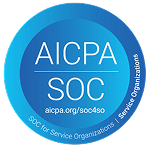Understanding Educational Loan Application Requirements: A Step-by-Step Guide
Planning on studying in the U.S. involves many moving parts, especially if you need additional student aid to pay for school. When applying for a private education student loan from a U.S. lender, you’ll want to know about the lender’s educational loan requirements and how to get started.
What are the requirements for a student loan?
As an international student, you’ll need to meet at least the lender’s minimum education student loan requirements to be a qualified applicant. Each lender has its unique lending guidelines that it adheres to when deciding whether to approve a loan application.
However, lenders, like MPOWER Financing, generally have a few common education loan requirements you should be aware of:
-
- Academic transcripts and test scores. You must provide your educational history, including copies of transcripts or diplomas from U.S. universities you attended previously, if applicable. You also must provide your standardized test scores (for example, GRE, GMAT, LSAT, MCAT, or NBDE) and English proficiency test scores.
- Proof of admission to a recognized institution. When applying for an education student loan, lenders also ask for a copy of the admission letter to the school plan to attend. Many lenders, like MPOWER, have a list of approved schools and academic programs that meet the lender’s education loan requirements.
- Valid visa status. All international students who want to study in the U.S. and borrow a private student loan must have a valid visa status. (Students can apply for funding before a visa is granted, but will need a valid student visa to enroll and receive funding.)
- Proof of identity. Provide a color copy of your valid passport, in addition to a secondary form of identification, like a national ID or driver’s license.
- Proof of residence. Students who are already in the U.S. must provide proof of a U.S. address. For example, a utility bill, rental lease, an addressed letter from the university or a bank statement can fulfill this requirement.
- Proof of funding sources. Lenders will also ask for proof that you funds to contribute to your education costs, including personal bank statements, pay stubs or scholarship award letters.
How to get a student Loan: Step-by-step
If you’ve determined you fulfill the general educational loan requirements described above, you might be ready to start the application process. Here’s a step-by-step guide to securing international student loan funding.
1. Research and compare lenders
Making time to research a handful of education student loan lenders can help you find the best offer for your financing needs. In addition to having different educational loan requirements, lenders charge different fixed or variable interest rates and fees, and have varying minimum and maximum borrowing limits.
For example, some lenders require a cosigner or collateral to secure the loan, while others, like MPOWER Financing, offer fixed-rate, no-cosigner private student loans.
2. Gather required documents
After comparing multiple lenders and choosing the best one for you, review the lender’s educational loan requirements. Put together any necessary supporting documentation, including academic and financial documents that you’ll need for your application.
3. Fill out a loan application
Applying online is a convenient and fast option. It takes just 30 seconds to determine your eligibility with MPOWER and about 30 minutes for the complete application.
If you can’t finish your application in one sitting, you can typically save your progress and return to it at a later time.
4. Wait for conditional approval
After submitting your application, the lender will review your information and determine whether you meet its requirements. If you do, your loan application might be conditionally approved. Conditional approval means your application is approved, pending supporting documents or steps.
If you receive conditional approval, your lender will provide a list of items or steps you must complete before final approval.
5. Submit the requested information and sign the agreement
Provide any requested information or documents to your lender and wait for confirmation that it doesn’t require any additional paperwork. The lender will review your submitted documents and confirm whether it’s prepared to finalize the loan.
If it is, you’ll receive the loan agreement, which states your loan details – including principal amount, loan rate, repayment term, repayment options and more. Carefully read the agreement and ensure you understand what you’re agreeing to; if you’re comfortable moving forward, sign the agreement.
Three common loan application hurdles
Getting a loan through a traditional bank can be challenging as an international student for a few reasons.
Lack of credit history
Banks and lenders often refer to a loan applicant’s U.S. credit history to determine their likelihood of repaying the loan. A credit history details past and current borrowing behavior, including payment history, and the applicant’s unpaid debt liability.
International students who want to borrow an education student loan for the first time might not have a U.S. credit record. In these situations, some lenders require applicants to add a U.S. cosigner with strong credit and reliable income on the application. Being a cosigner, however, is a serious financial responsibility, so finding a willing participant can be a hurdle for international students. Some lenders, like MPOWER, offer education funding without the need for a cosigner.
Unfamiliar legal and financial terminology
The U.S. financial terms might differ from those of your home country, which can present a learning curve during the loan application process. Additionally, you’ll want to fully and clearly understand the legal terminology in an application or loan agreement so you know what you’re agreeing to upon signing a contract. This can be a challenging and time-consuming hurdle to get past.
Visa uncertainties
Ultimately, a key educational loan requirement is to be enrolled in a recognized U.S. school and academic program. However, a student’s enrollment eligibility is also contingent on having an active student visa – or at least, having a student visa that’s in progress and will be secured by the time school starts.
However, the immigration process operates on its own timeline, independent of loan application deadlines. If a lender is uncertain about your visa status, it could delay or halt the student loan process entirely.
Practical tips for a streamlined application process
-
- Document organization: Create a checklist of requirements and supporting documents, and their submission timelines. If you need to request copies of documents from a third party, include their average turnaround time, too.
- Understanding terms: Familiarize yourself with common loan terminology that you’ll see when shopping around for an education student loan. Some of these terms include “principal,” “APR,” “grace period,” “deferment,” and “fixed or variable interest.”
- Start the process early. Generally, you can start the education loan application process even if your visa status is still in progress. Keep in mind that loan funds won’t be disbursed until your visa is approved.
- Meeting deadlines: With the help of the checklist you made earlier, line up deadlines so that school enrollment, your visa application and student loan application sync up as much as possible. Successfully enrolling for your school term and having an approved visa ready might help you minimize any funding delays.
-
- Choose a lender that’s dedicated to your success. MPOWER makes the loan process simpler by not requiring a cosigner or collateral, so you can assert your independence. And MPOWER goes further to support students through exclusive internship and job search resources during school as well as access to a free bank account and credit card so you can access local funds easily.
Make an informed decision before borrowing student loans
Every lender adheres to its own rules regarding educational loan requirements. Generally, you’ll need to meet the lender’s academic, visa and financial requirements to qualify, in addition to providing supporting documents proving your eligibility.
Fortunately, if you need extra funds to pay for school, MPOWER makes the loan application process easy with a simple online form. See if you qualify for MPOWER Financing’s no-cosigner private student loan.

